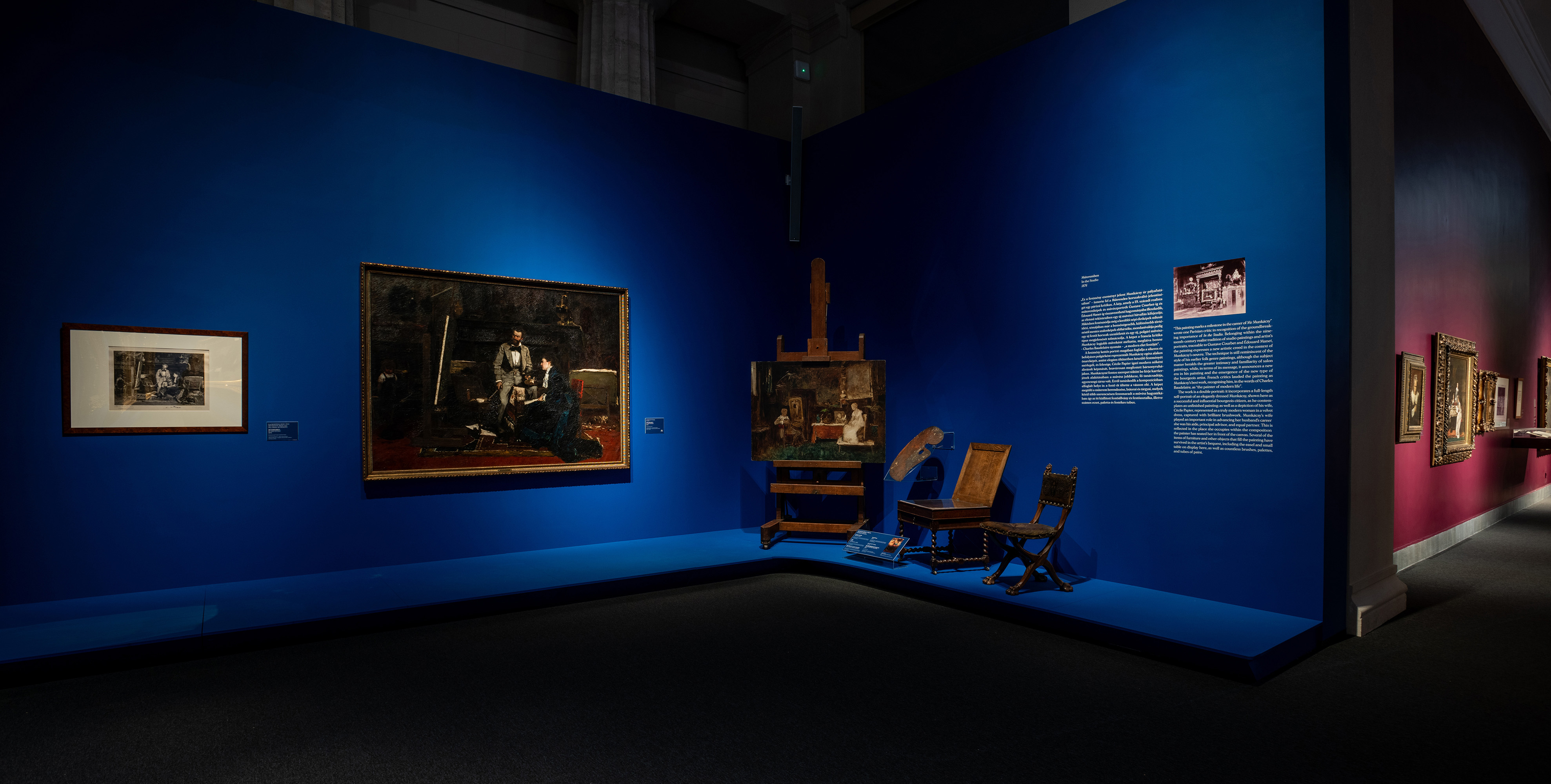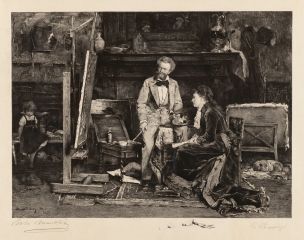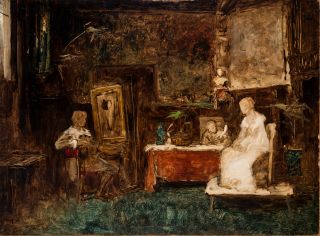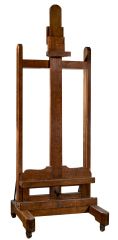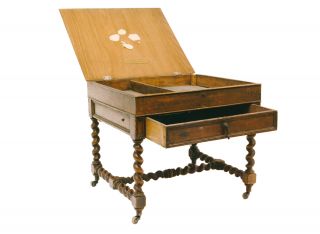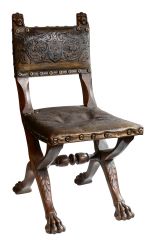„Ez a festmény eseményt jelent Munkácsy úr pályafutásában” – ismerte fel a Műteremben korszakváltó jelentőségét egy párizsi kritikus. A kép, amely a 19. századi realista műteremképek és művészportrék Gustave Courbet-ig és Édouard Manet-ig visszavezethető hagyományába illeszkedik, az életmű tekintetében egy új művészi hitvallás kifejezője. Miközben festésmódja még a korábbi népi életképek stílusát idézi, témájában már a bensőségesebb, különösebb történéstől mentes szalonképek előhírnöke, mondanivalója pedig egy új festői korszak szemléletét és egy új, polgári művésztípus megjelenését tolmácsolja. A képet a francia kritika Munkácsy legjobb műveként méltatta, meglátva benne - Charles Baudelaire nyomán – „a modern élet festőjét”.
"This painting marks a milestone in the career of Mr Munkácsy", wrote one Parisian critic in recognition of the groundbreaking importance of In the Studio. Belonging within the nineteenth-century realist tradition of studio paintings and artist's portraits, traceable to Gustave Courbet and Édouard Manet, the painting expresses a new artistic creed in the context of Munkácsy's oeuvre. The technique is still reminiscent of the style of his earlier folk genre paintings, although the subject matter heralds the greater intimacy and familiarity of salon paintings, while, in terms of its message, it announces a new era in his painting and the emergence of the new type of the bourgeois artist. French critics lauded the painting as Munkácsy's best work, recognising him, in the words of Charles Baudelaire, as "the painter of modern life”.
The work is a double portrait: it incorporates a full-length self-portrait of an elegantly dressed Munkácsy, shown here as a successful and influential bourgeois citizen, as he contemplates an unfinished painting; as well as a depiction of his wife, Cécile Papier, represented as a truly modern woman in a velvet dress, captured with brilliant brushwork. Munkácsy's wife played an important role in advancing her husband's career: she was his aide, principal advisor, and equal partner. This is reflected in the place she occupies within the composition: the painter has seated her in front of the canvas. Several of the items of furniture and other objects that fill the painting have survived in the artist's bequest, including the easel and small table on display here, as well as countless brushes, palettes, and tubes of paint. |
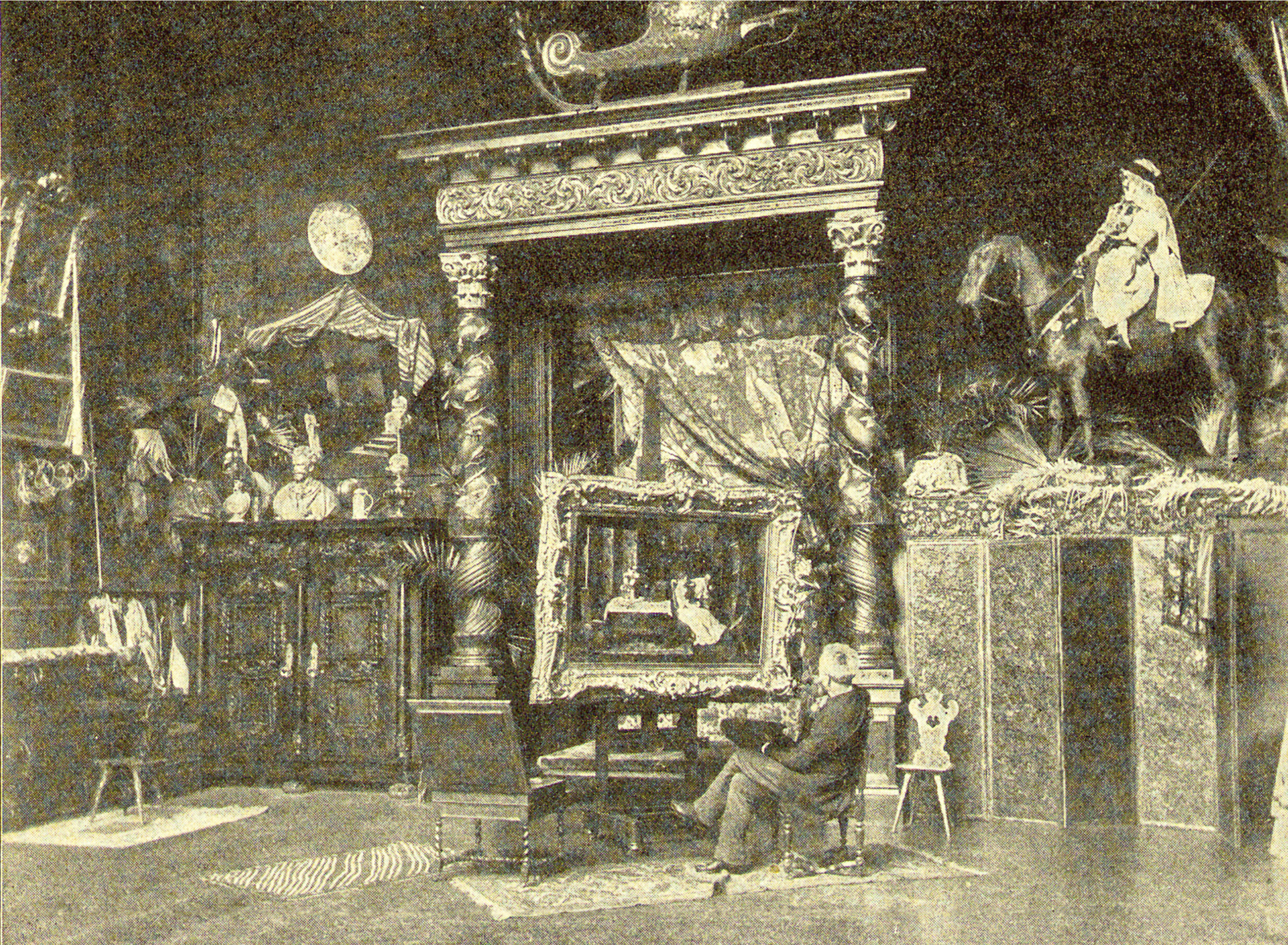 |
 Munkácsy
Munkácsy
